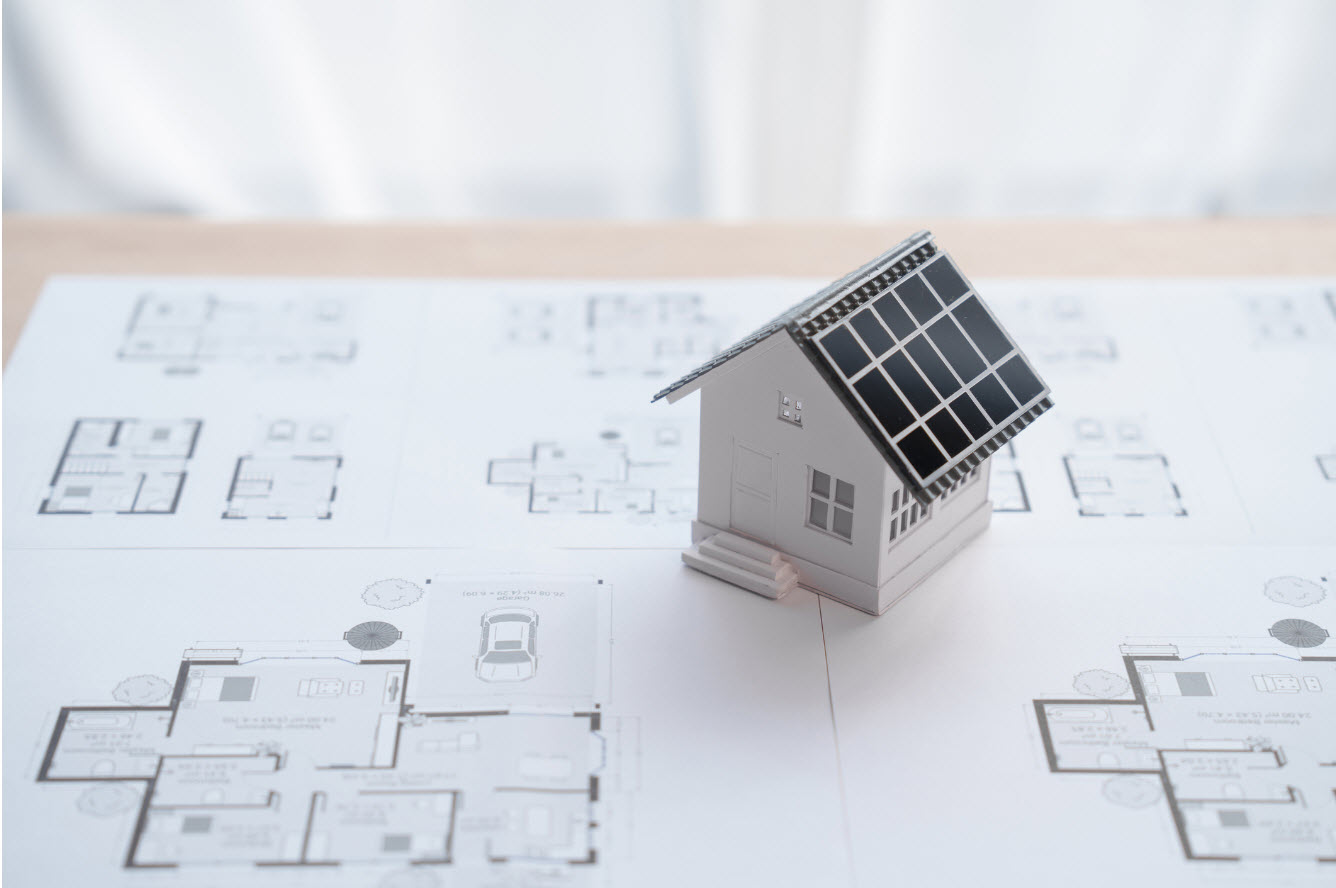Welcome to the future, where homes are no longer just a place to live, but a technological experience.
By all accounts, the conveniences that our smart home gadgets offer us are not so different from the technological advancements many marveled at on the space-age television program, The Jetsons, set in the Googie-inspired utopian future of 2062. Even Rosie, the humanoid robot maid, would have a difficult time keeping up with our voice-command speakers, self-possessed roombas, video doorbells, thermostats that know our room temperature preferences, and computerized touch-screen refrigerators. Her poor caster-wheels would likely fall off.
And with technology now available to build homes that generate as much energy as they consume, net-zero homes have the power to change how we live today. Futuristic living is already here.
So, what does a net-zero home actually mean? It’s the ability for your home to produce as much energy as it consumes – perhaps even generating an energy surplus that you’re able to feed or sell back into the electricity grid.
To date, there are more than 1,250 homes labelled under the Canadian Home Builders Association’s Net Zero Home Labelling Program (in 2020, it was 450). This list includes detached, attached and multi-unit residential buildings - as well as some older homes that have been retrofitted. Homes under the label are up to 80 per cent more energy-efficient than a typical new home, thanks to extra insulation, high-performance windows and improved airtightness to minimize heating and cooling needs.
So, what are some essential components of a net-zero home and how do they contribute to achieving a net-zero energy balance?
- Space-age insulation and airtightness: The first requirement of a net-zero home is to ensure it is well-insulated and airtight. This helps to reduce heat loss, which means the house needs less energy to maintain a comfortable temperature. This can be achieved by using high-quality insulation, sealing air leaks, and installing triple-pane windows.
- Orbiting a powerful renewable energy source: The next step is to install renewable energy systems to produce energy that will power the home based on your yearly consumption. Given that George and Jane Jetson lived in a sky-pad in Orbit City, solar panels are the most obvious energy choice. They’re also the most common and efficient renewable energy source for homes. They can generate electricity for the house during the day and store excess energy in batteries for use at night.
- Robotic assistance: Appliances like refrigerators, dishwashers, washing machines, and dryers are basically our versions of robots that also consume a significant amount of energy in a home. Appliances with the ENERGY STAR® label meet high energy-efficiency standards. Could an AI (artificial intelligence) dishwasher be in your future?
- Mod lighting: Lighting in net zero homes is out of this world. LED bulbs are already popular because they consume less energy and last longer than traditional incandescent bulbs. Are light bulbs responsive to our voice, gestures and moods far behind? For now LEDs are available in a wide range of colours and styles, making them a versatile and energy-efficient lighting option.
- Ultramodern systems: Heating and cooling systems are essential components of a net-zero home. The most energy-efficient option for heating and cooling is a heat pump system. These systems work by transferring heat from one place to another, making them highly efficient. They are also available in both air-source and ground-source models.
Building or retrofitting a home to be net zero will require higher upfront costs, but the long-term benefits of energy savings and a reduced carbon footprint can make it a wise investment. Plus there are numerous streamlined federal, provincial and municipal funding opportunities and incentives to help propel you forward.
According to the Canadian Home Builders Association, significant strides have been made over the last five to ten years that have reduced the additional costs of net-zero homes by as much as 50 per cent. When operating costs are considered, net-zero homes can even be cost-neutral thanks to the monthly energy savings achieved.
As we rocket towards a new net-zero age by 2050, these homes combine advanced technology, energy-efficient design, and water conservation for a sustainable, efficient, and comfortable environment not unlike our favourite space-age family enjoyed. Perhaps you’ll even want to install a conveyor belt like George did to walk his dog, Astro? While some of the technology may seem futuristic, it's important to remember that these homes are achievable today, and they will only become more accessible. So, welcome to the future, where net-zero homes are the norm, and living is out of this world!
To learn more about net-zero homes and the Canadian Home Builders Association, read our blog, or check out our ThinkEnergy podcast episode, “There’s No Place Like a Net-Zero Home,” featuring our in-depth interview with CEO, Kevin Lee.



